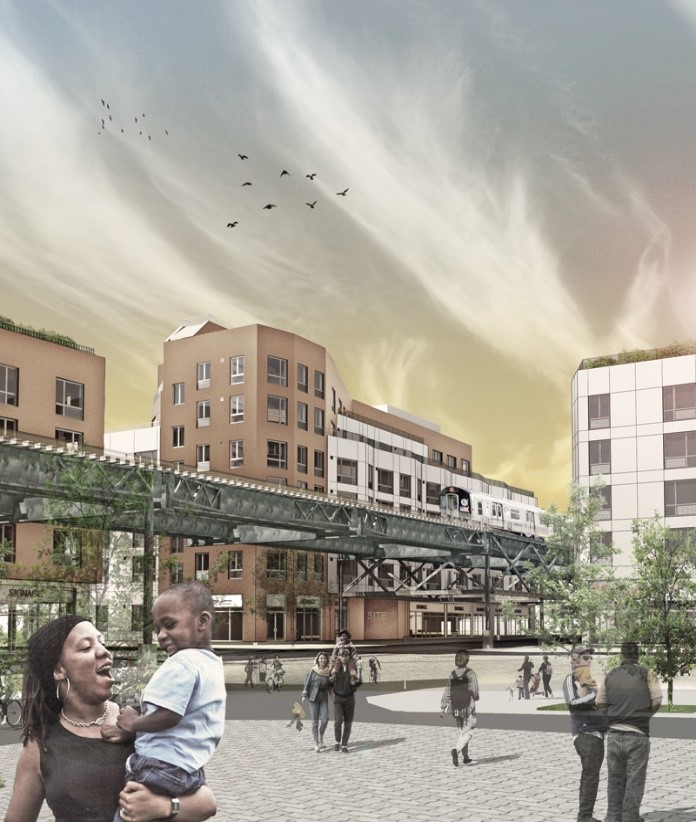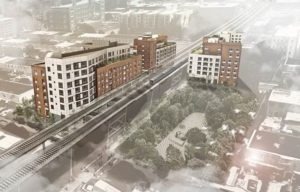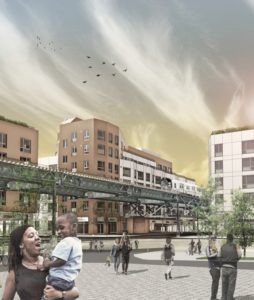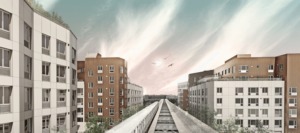

Blog
The size and density of The Livonia Apartments project represented an opportunity to set a higher benchmark in green design strategies.


The Livonia Apartments is Phase II of an affordable sustainable housing development in the rapidly changing neighborhood of East New York, Brooklyn. Through a partnership with the NYC Department of Housing Preservation and Development (HPD) and the New York City Housing Development Corporation (HDC) and designed by Magnusson Architecture and Planning (MAP), BRP Companies and partners developed this mixed-use, four-building complex to provide 292 apartments of both affordable and supportive housing, including 10% of units specified for persons with disabilities and municipal employees. In addition, Livonia II provides 30,000 square feet of community and retail space for the neighborhood.
The size and density of The Livonia Apartments project represented an opportunity to set a higher benchmark in green design strategies. Mayor Bill di Blasio stated at the groundbreaking, “For decades these vacant lots have been a blight on this neighborhood. Today, we’re breaking ground on a project that will deliver the affordable housing, good local jobs and vital services this community needs. We believe in a city where every neighborhood rises together, and where we make investments that give more people a shot at a better life.” Although the development straddles the busy elevated L & 3 trains and the Livonia Ave. station, the buildings’ facades are angled to minimize the sound and rattle from the trains, while maximizing privacy and natural light.
As part of a commitment to sustainable redevelopment, The Livonia Apartments Phase II is targeting LEED Silver certification. BRP Companies and HELP USA engaged Steven Winter Associates, Inc. to provide energy analysis, sustainability consulting, and the third-party verification with the stringent quality assurance standards included in LEED for Homes Multifamily Midrise. The team implemented numerous green building strategies within each of the five key areas of whole-building sustainability:

• Sustainable Site Development – The white roof and vegetative areas covering portions of the substantial roof space will reduce the heat island effect and bring an elevated green space to the area.
• Water Savings & Efficiency – In addition to the multiple garden terraces on the roof and balconies, all water fixtures are high-efficiency and ultra low-flow.
• Energy & Atmosphere – Energy cost savings of 20% compared to a code compliant building are expected due to a high-performance envelope, efficient systems, lighting, and controls.
• Construction Materials & Resources – Materials with modern aesthetics were chosen for durability as well as looks and local availability.
• Indoor Environmental Quality – Low-emitting finishes, carpet-free apartments, dedicated fresh air, and continuous exhaust, and no smoking on the premises improve the indoor comfort of the tenants.
Affordable housing projects in New York City have a choice of green building criteria. By choosing LEED Silver certification, The Livonia Apartments Phase II must meet a series of prerequisites in the categories above in addition to earning enough points to qualify for higher tiers of certification. The voluntary LEED program provides stringent third-party verification in a process set by the USGBC to ensure the green features are installed properly and performing when residents move in. Reaching even the basic level of certification and passing the performance tests requires quality construction and team dedication – that’s why we’re especially proud of The Livonia Apartments Phase II project and its LEED certification.

“The quality of housing and community spaces in East New York makes a critical impact on the health and overall wellbeing of local families,” says Rosanne Haggerty, President of Community Solutions. “Livonia [Apartments] is designed specifically to promote safety and stability, and answers a call from the community to revitalize this central neighborhood corridor.”
Contributor: Maureen Mahle, Managing Director, Sustainable Housing Services
Steven Winter Associates